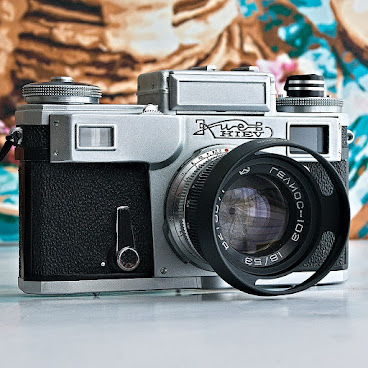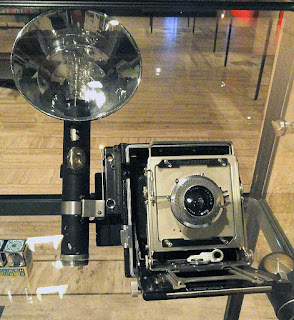In the late 1970s, as the world of photography was rapidly evolving, Pentax introduced a series of cameras that would redefine the standard for compact, user-friendly SLRs. Among these was the Pentax ME, a camera that combined simplicity with sophistication, making it an ideal choice for both beginners and experienced photographers alike. With its sleek design, automatic exposure mode, and ease of use, the Pentax ME quickly became a favorite for those who wanted high-quality results without the complexity of fully manual operation.
A Brief History of the Pentax ME
Launched in 1976 alongside its manual-focus sibling, the Pentax MX, the Pentax ME was part of the M series—Pentax's answer to the growing demand for smaller, lighter cameras that didn't compromise on performance. The ME was designed with a focus on simplicity and convenience, featuring an aperture-priority automatic exposure system that allowed photographers to focus on composition while the camera handled the exposure.
The Pentax ME was positioned as a mid-range camera, appealing to enthusiasts who wanted the flexibility of an SLR without the steep learning curve. Its introduction marked a shift in camera design, emphasizing portability and ease of use, a trend that would continue into the 1980s with other popular models like the Pentax ME Super.
What Makes the Pentax ME Special?
Aperture-Priority Automatic Exposure: The standout feature of the Pentax ME is its aperture-priority automatic exposure mode. In this mode, the photographer selects the desired aperture, and the camera automatically chooses the appropriate shutter speed. This makes the ME an excellent choice for photographers who want to ensure proper exposure without constantly adjusting settings.
Compact and Lightweight Design: Weighing in at just 460 grams, the Pentax ME is one of the lightest 35mm SLRs of its time. Its compact body makes it easy to carry around, whether you’re exploring city streets or capturing landscapes in the great outdoors. Despite its small size, the camera feels solid in hand, thanks to its robust metal construction.
Bright Viewfinder: The ME features a large, bright viewfinder with a 92% field of view and 0.97x magnification. This makes it easy to compose shots and achieve accurate focus. The viewfinder also includes an LED display that shows the selected shutter speed, a useful feature for monitoring exposure settings at a glance.
Pentax K Mount Compatibility: Like other cameras in the M series, the Pentax ME uses the versatile K mount, which provides access to a wide range of lenses. From classic Pentax-M lenses to modern K-mount options, the ME offers great flexibility for photographers looking to experiment with different focal lengths and styles.
Simplicity in Operation: The Pentax ME was designed with simplicity in mind. The camera's controls are straightforward, with a minimalistic layout that makes it easy to use, even for those new to SLR photography. The lack of manual shutter speed selection in auto mode means fewer dials and switches, allowing photographers to concentrate on their creative vision.
Shooting with the Pentax ME
Shooting with the Pentax ME is a user-friendly experience, especially for those who prefer a more hands-off approach to exposure control. The aperture-priority mode is the camera’s default setting, meaning you only need to set the desired aperture on the lens, and the ME does the rest. This allows you to focus on composition and timing, making it ideal for street photography, portraits, and everyday shooting.
Here’s a breakdown of the key features and controls:
- Aperture Ring: Located on the lens, the aperture ring allows you to control the f-stop, which affects depth of field and exposure. The ring has click stops, providing tactile feedback as you adjust settings.
- Exposure Compensation Dial: The ME includes an exposure compensation dial, allowing you to adjust exposure by up to two stops in either direction. This is useful for tricky lighting situations where you need to overexpose or underexpose the image.
- Mode Selector: The mode selector switch is simple, with options for Auto (aperture-priority), Manual (for bulb exposures), and Flash settings. This simplicity is part of what makes the ME so approachable.
The Pentax ME also features a self-timer and a hot shoe for attaching an external flash, providing additional creative options for photographers. The camera’s quiet shutter and smooth film advance contribute to a seamless shooting experience, making it a joy to use in various situations.
Pros and Cons of the Pentax ME
Pros:
- Ease of Use: The automatic exposure mode makes it perfect for beginners and those who want a no-fuss shooting experience.
- Compact and Lightweight: Its small size and light weight make it an excellent travel companion.
- Bright Viewfinder: A large, clear viewfinder with LED readouts enhances shooting precision.
- Lens Compatibility: The K mount provides access to a wide range of lenses, offering versatility for different types of photography.
- Durable Build: Despite its compact size, the ME is well-built and can withstand regular use.
Cons:
- Limited Manual Control: The lack of manual shutter speed control in Auto mode might be limiting for photographers who prefer full control over their settings.
- Battery Dependence: The ME relies on batteries to operate the light meter and shutter, meaning it won’t function without power.
- No Depth of Field Preview: Unlike some higher-end models, the ME does not feature a depth of field preview button, which could be a drawback for those who need it.
Why You Should Consider the Pentax ME
The Pentax ME is a fantastic choice for photographers who want a simple, reliable SLR that delivers excellent results without the complexity of fully manual controls. Its compact size, ease of use, and high-quality construction make it a great option for everyday photography, whether you’re capturing candid moments, portraits, or landscapes.
For beginners, the ME is an excellent introduction to the world of film photography, providing an intuitive shooting experience that doesn’t overwhelm with too many options. Experienced photographers will appreciate its portability and the quality of the images it produces, especially when paired with Pentax’s legendary K mount lenses.
Conclusion
The Pentax ME is a testament to the power of simplicity in camera design. Its automatic exposure system, coupled with a compact and durable build, makes it an ideal choice for photographers who want to focus on capturing the moment rather than fiddling with settings. Whether you’re new to film photography or a seasoned shooter looking for a reliable SLR, the Pentax ME is a classic camera that continues to hold its own in today’s world.
If you come across a Pentax ME in good condition, don’t hesitate to give it a try. Load it with your favorite film, head out for a shoot, and experience the joy of analog photography with this compact classic.
Have you used a Pentax ME, or are you thinking of getting one? Share your thoughts and experiences in the comments below! If you’re looking for a Pentax ME manual or more information on compatible lenses, check out the resources linked here.












